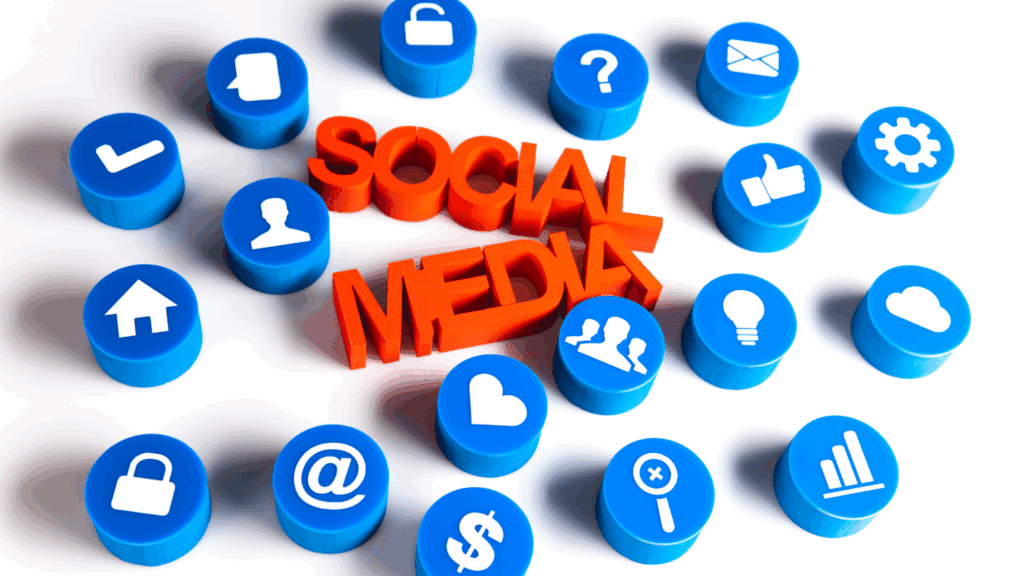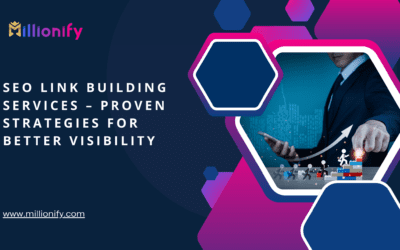In the digital-first era of 2025, social media is no longer just a place for connecting with friends—it’s where businesses build empires. According to Statista (2025), over 4.95 billion people actively use social media, representing more than 60% of the global population. This massive user base has transformed social media into a marketing powerhouse, where brands can engage directly with their audience, build trust, and drive consistent sales.
This Ultimate Guide to Social Media Marketing Services dives deep into everything you need to know—from strategy development and content creation to analytics and future trends. Whether you’re a small business owner or a marketing professional, mastering social media marketing (SMM) will give you a competitive advantage in today’s fast-evolving landscape.

Understanding the Core of Social Media Marketing
Social media marketing (SMM) involves using platforms like Facebook, Instagram, TikTok, and LinkedIn to connect with audiences, build a brand, and drive growth. Unlike traditional advertising—where communication is one-way—social media is built on interaction, engagement, and community.
It’s not just about posting updates, it’s about crafting meaningful conversations that humanize your brand. Through storytelling, video content, and strategic engagement, businesses create relationships that translate into long-term loyalty and measurable ROI.
The Importance of Social Media Marketing in 2025
As algorithms evolve and user behavior shifts, SMM continues to redefine digital marketing. In 2025, businesses that don’t leverage social platforms risk being invisible online. Here’s why social media remains indispensable:
- Massive Audience Reach: Platforms like TikTok and Instagram attract billions of active users.
- Cost-Effective Advertising: Social media ads often outperform traditional ads in ROI.
- Data-Driven Insights: Real-time analytics provide valuable customer behavior insights.
- Enhanced Trust: Brands that engage authentically earn long-term credibility.
Social media marketing services help companies stay ahead by combining creativity with analytics, ensuring every post or campaign contributes to a measurable goal.
You May Also Like : What Are Social Media Marketing Services?
Benefits of Using Professional Social Media Marketing Services
1. Amplified Brand Awareness
Hiring professionals ensures your message is consistent, visually appealing, and reaches the right audience. They know how to optimize content to beat algorithms and achieve organic growth.
2. Improved Customer Relationships
Through consistent engagement—comments, polls, and DMs—brands build authentic relationships. This human element transforms followers into advocates who amplify your brand’s message.
3. Targeted Advertising
Advanced targeting allows businesses to reach specific demographics based on interests, age, and location. Paid campaigns ensure that every marketing dollar delivers tangible results.
4. Data-Backed Decisions
Social media services track engagement metrics, conversion rates, and audience demographics. This data helps refine your strategy, improving future campaign performance.
5. Long-Term Business Growth
A consistent, high-quality social media presence strengthens customer loyalty, drives conversions, and positions your brand as an industry leader.
Types of Social Media Marketing Services
| Type | Description | Example |
| Organic Management | Managing content calendars, engagement, and organic growth strategies. | Consistent posting and community interaction. |
| Paid Advertising | Running paid ads on Meta, LinkedIn, or TikTok. | Targeted ad campaigns with clear KPIs. |
| Influencer Marketing | Partnering with influencers to reach niche audiences. | Product reviews on Instagram or YouTube. |
| Strategy Consulting | Tailoring content and campaigns based on goals. | Developing a 6-month strategy roadmap. |
| Reputation Management | Monitoring mentions, reviews, and feedback. | Responding to public comments and reviews. |
Professional agencies combine several of these services to create comprehensive campaigns tailored to business goals.
Choosing the Right Social Media Platform for Your Business
Not all platforms deliver the same results. Each one attracts different audiences and content types.
Facebook – Building Communities
With over 3 billion users, Facebook remains the most versatile platform. It’s perfect for community-building, customer service, and targeted ads.
Instagram – Visual Storytelling
Instagram thrives on visuals—photos, reels, and stories. It’s ideal for lifestyle brands, fashion, and eCommerce that rely on aesthetics to attract engagement.
LinkedIn – B2B Networking
LinkedIn is the go-to platform for professionals. It’s excellent for B2B marketing, lead generation, and establishing thought leadership.
X (Twitter) – Real-Time Conversations
Formerly Twitter, X is perfect for brand announcements, trends, and public relations. Real-time interactions help brands appear timely and authentic.
TikTok – Creativity & Virality
TikTok’s algorithm rewards creativity. Short, engaging videos can go viral overnight, giving even small businesses massive exposure.
Developing an Effective Social Media Strategy
A strong strategy separates successful brands from the rest.
Set SMART Goals
Your objectives should be Specific, Measurable, Achievable, Relevant, and Time-bound. For instance, “Increase Instagram engagement by 20% within 90 days.”
Identify Target Audiences
Define who your ideal customers are—demographics, interests, pain points, and online behavior. The more specific, the better your targeting.
Craft a Unique Brand Voice
Consistency in tone, visuals, and messaging creates brand recognition. Whether you’re playful or professional, keep it authentic across all channels.

Content Creation and Optimization
“Content is king, but engagement is queen.” Creating valuable, visually appealing content drives the most impact.
Use a mix of:
- Short-form videos (Reels, TikToks)
- Carousel posts
- Interactive stories
- Polls and contests
Regular posting builds reliability. Scheduling tools like Buffer, Hootsuite, and Later make consistency effortless.
| Content Type | Engagement Level | Ideal Platform |
| Reels/Videos | Very High | Instagram, TikTok |
| Infographics | High | Pinterest, LinkedIn |
| Live Streams | Medium | Facebook, YouTube |
Leveraging Paid Social Advertising
Paid ads are powerful accelerators for brand visibility.
Businesses using paid ads enjoy a 24% higher conversion rate (Source: HubSpot 2024). Paid campaigns let you target specific audiences, retarget website visitors, and test different creatives for optimal performance.
Tips for Effective Paid Campaigns:
- Use A/B testing to refine ads.
- Retarget abandoned carts or inactive followers.
- Monitor KPIs like CTR, CPM, and conversion rate.
The Role of Influencer Marketing
Influencers bring authenticity and reach that brands can’t easily replicate.
Micro vs. Macro Influencers
- Micro-Influencers (10K–100K followers): Higher engagement, niche audiences, lower cost.
- Macro-Influencers (100K+ followers): Broader reach but lower engagement rates.
Collaborating with influencers who genuinely align with your brand ensures organic promotion and strong credibility.
Social Media Analytics and Reporting
Measuring performance is critical. Analytics reveal what’s working—and what’s not.
| Metric | Definition | Why It Matters |
| Engagement Rate | Likes, comments, shares per post | Measures interaction quality |
| CTR | Clicks divided by impressions | Shows content effectiveness |
| Conversion Rate | Percentage of users who take action | Evaluates ROI |
| Follower Growth | Increase in audience size | Tracks brand reach |
Use tools like Google Analytics, Sprout Social, and Meta Business Suite to automate reporting and track campaign health.
Trends Shaping Social Media Marketing in 2025
AI-Powered Personalization
Artificial Intelligence now tailors content for each user, helping brands deliver hyper-relevant ads and posts.
Rise of Short-Form Video
Platforms like TikTok and Instagram Reels dominate attention spans. Videos under 60 seconds outperform longer ones in engagement metrics.
Social Commerce
Users can purchase directly within apps—blurring the line between social media and eCommerce.
Authenticity Over Perfection
Audiences prefer real, unfiltered content over polished ads. Transparency builds deeper connections.
Common Mistakes to Avoid in Social Media Marketing
- Ignoring engagement and posting without purpose.
- Focusing only on vanity metrics like follower count.
- Being inconsistent with branding and posting schedule.
- Neglecting data analytics and optimization.
Avoiding these pitfalls ensures your campaigns stay authentic and effective.
Top Social Media Marketing Tools
| Tool | Functionality | Best For |
| Hootsuite | Scheduling, analytics, monitoring | Multi-platform management |
| Canva | Graphic and video design | Non-designers creating visuals |
| Buffer | Scheduling and performance tracking | Teams managing multiple brands |
| Later | Instagram and TikTok planning | Visual content management |
| Sprout Social | Deep analytics and reporting | Large organizations |
Building a Winning Social Media Team
Social media success requires collaboration:
- Strategists: Set goals and design campaigns.
- Content Creators: Develop visuals and copy.
- Analysts: Track metrics and optimize performance.
- Community Managers: Engage with the audience and nurture loyalty.
Conclusion
Social media marketing in 2025 is about blending creativity with strategy. Businesses that invest in social media marketing services gain not just visibility—but credibility and consistent revenue growth.
By embracing data, storytelling, and authenticity, you can turn every follower into a loyal customer. The key lies in staying adaptive, engaging authentically, and continually optimizing for results.
FAQs
1. What Are the Key Benefits of Social Media Marketing Services?
They help build brand awareness, generate leads, and increase engagement through professional strategies tailored to your business goals.
2. How Much Should a Business Spend on Social Media Marketing?
Most businesses allocate 10–15% of their marketing budget to social media efforts, depending on scale and objectives.
3. Which Social Media Platform Is Best for Small Businesses?
Facebook and Instagram offer high engagement and flexible advertising options that suit small budgets.
4. How Do I Measure Success in Social Media Marketing?
Track engagement, click-through rates, conversions, and customer sentiment using analytics tools.
5. What Are the Emerging Trends in Social Media Marketing for 2025?
Expect AI-driven content, interactive shopping experiences, and authentic, unfiltered brand storytelling.



